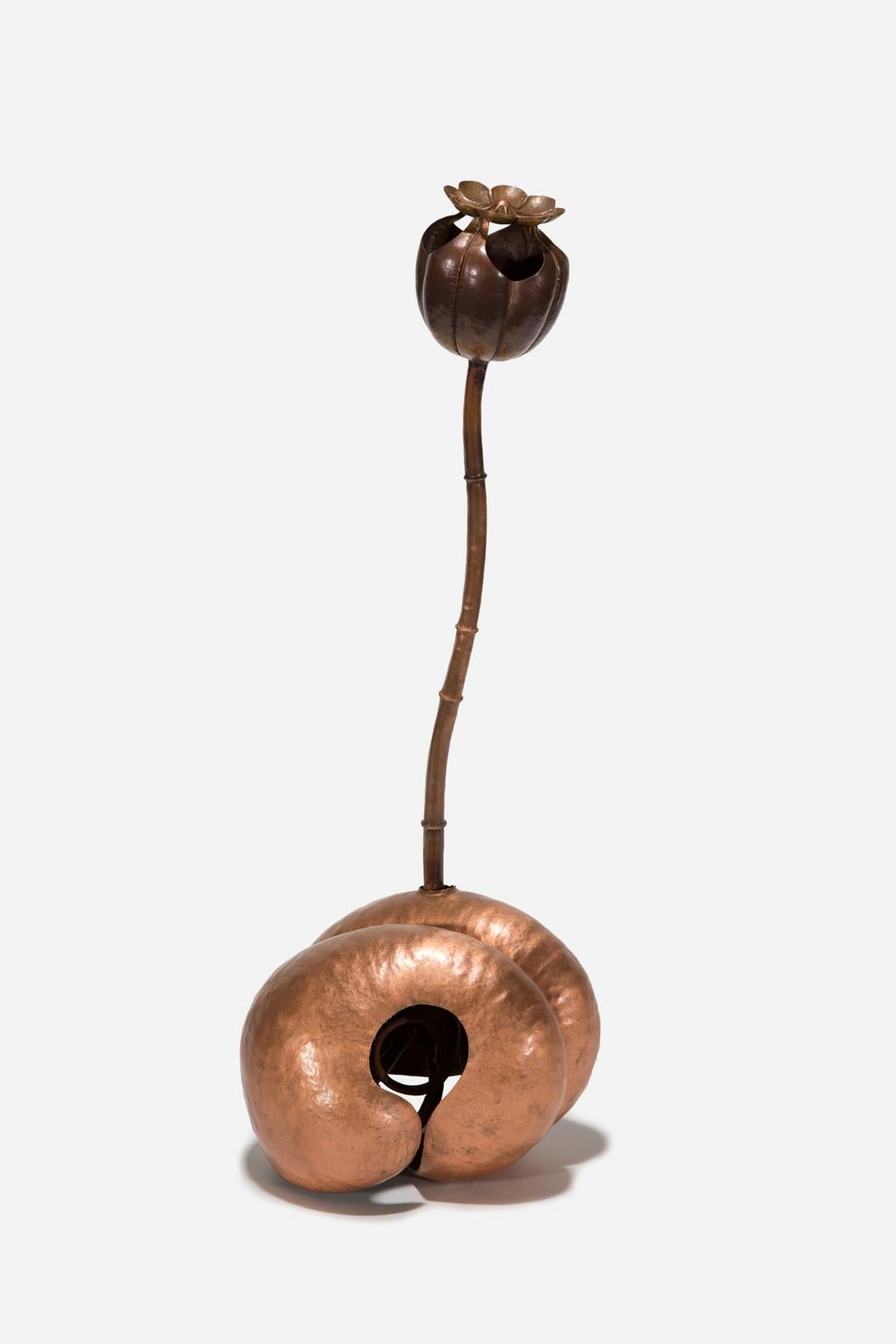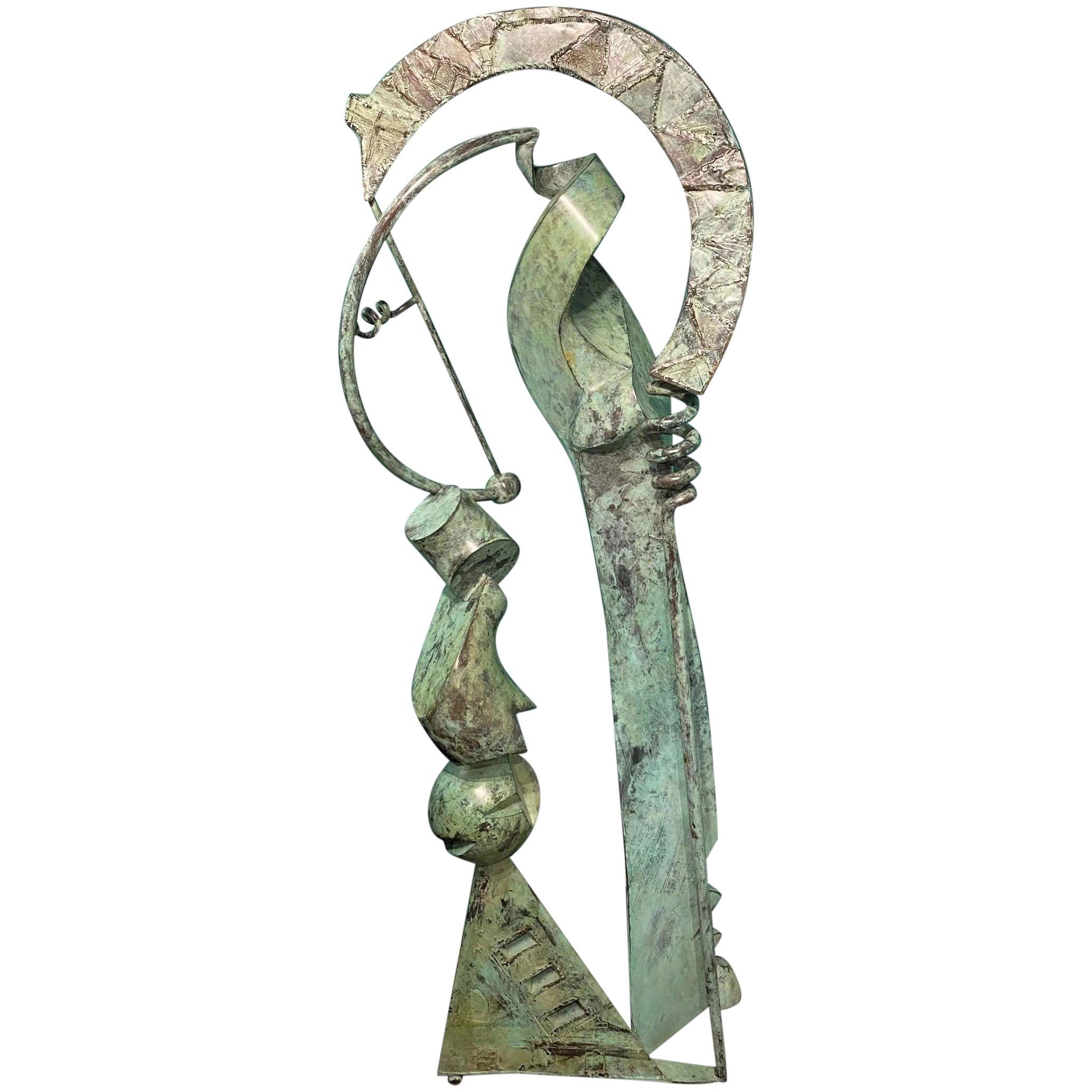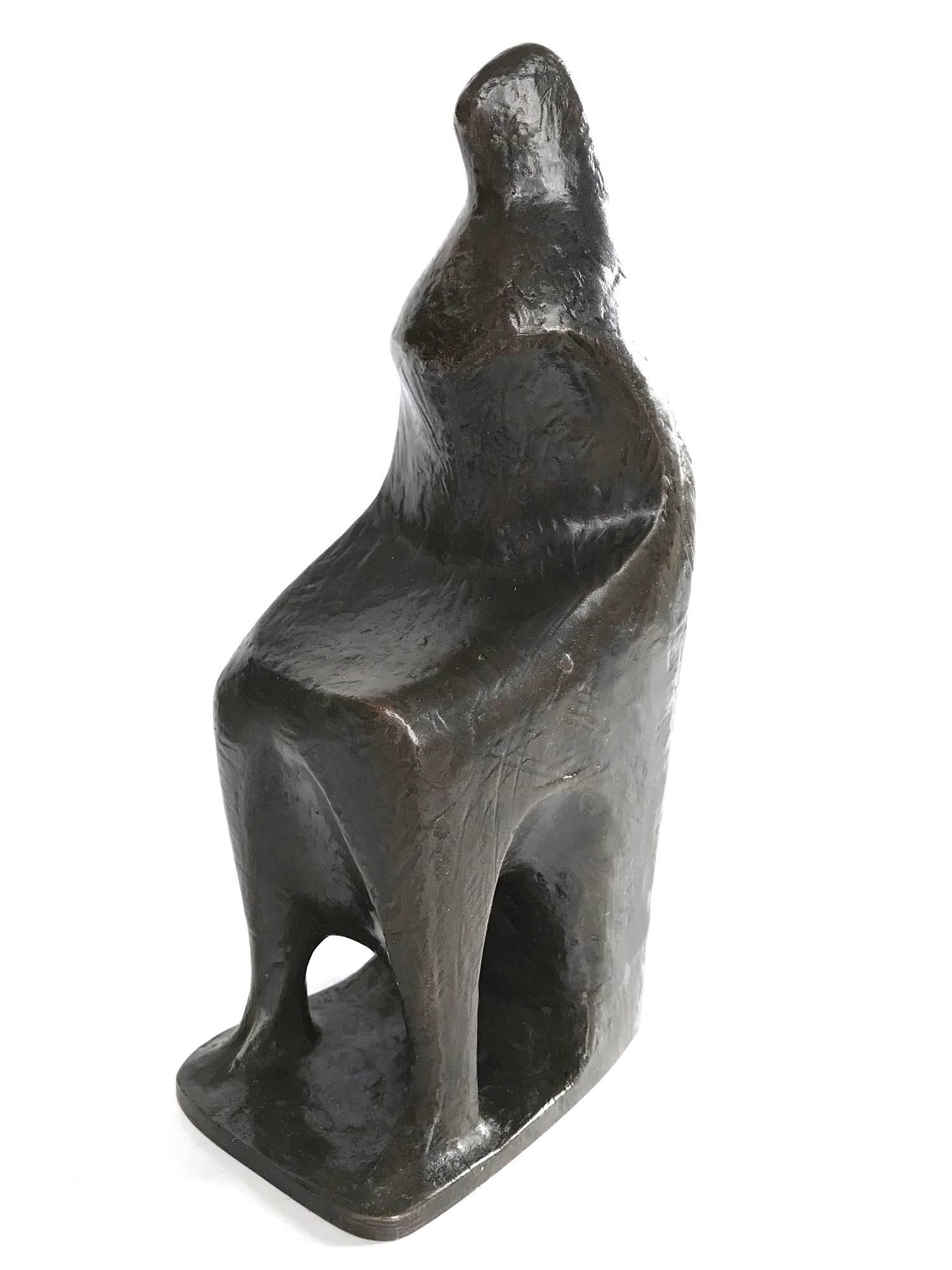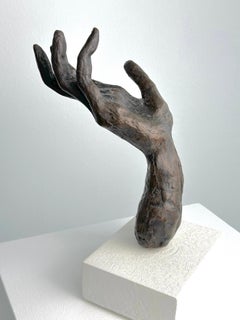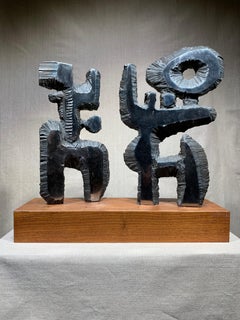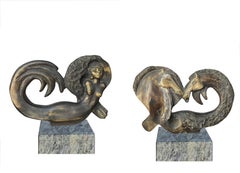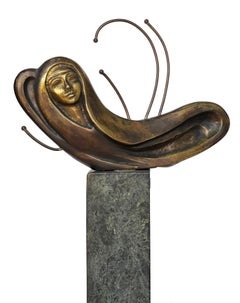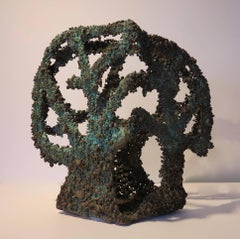
Three-sided Tree (Brutalist biomorphic organic abstract bronze sculpture)
View Similar Items
Video Loading
Want more images or videos?
Request additional images or videos from the seller
1 of 10
Val BertoiaThree-sided Tree (Brutalist biomorphic organic abstract bronze sculpture)1991
1991
About the Item
- Creator:Val Bertoia (1949, American)
- Creation Year:1991
- Dimensions:Height: 15 in (38.1 cm)Width: 15.5 in (39.37 cm)Depth: 6 in (15.24 cm)
- Medium:
- Movement & Style:
- Period:
- Condition:
- Gallery Location:Wilton Manors, FL
- Reference Number:1stDibs: LU24521540493
About the Seller
4.9
Gold Seller
These expertly vetted sellers are highly rated and consistently exceed customer expectations.
Established in 2007
1stDibs seller since 2015
326 sales on 1stDibs
Typical response time: 10 hours
More From This SellerView All
- Reaching (bronze hand)Located in Wilton Manors, FLReaching, ca. 1980. Cast bronze. Signed in lower region on wrist. A rare example from the artist's later period influenced by figurative abstraction with expressionist tendencies. James Edward Lewis (August 4, 1923 – August 9, 1997) was an African-American artist, art collector, professor, and curator in the city of Baltimore. He is best known for his role as the leading force for the creation of the James E. Lewis Museum of Art, an institution of the HBCU Morgan State University. His work as the chairman of the Morgan Art Department from 1950 to 1986 allowed for the museum to amass a large collection of more than 3,000 works, predominantly of African and African diasporan art.[1] In addition, he is also well known for his role as an interdisciplinary artist, primarily focused on sculpture, though also having notable examples of lithography and illustration. His artistic style throughout the years has developed from an earlier focus on African-American history and historical figures, for which he is most notable as an artist, to a more contemporary style of African-inspired abstract expressionism. Early and personal life James E. Lewis was born in rural Phenix, Virginia on August 4, 1923 to James T. Lewis and Pearline (Pearlean) Harvey.[5] Lewis' parents were both sharecroppers. Shortly after his birth, his father moved to Baltimore for increased job opportunity; James E. was subsequently raised by his mother until the family was reunited in 1925. They lived for a short time with distant relatives until moving to a four-bedroom house on 1024 North Durham Street in East Baltimore, a predominantly African-American lower-class neighborhood close to Johns Hopkins Hospital. Lewis' primary school, PS 101, was the only public school in East Baltimore that served black children. Lewis grew up in a church-going family, his parents both active members of the Faith Baptist Church, devoting the entirety of their Sundays to church activities. His parents worked a variety of different jobs throughout his youth:[6] his father working as a stevedore for a shipping company, a mechanic, a custodian, a mailroom handler,[6] and an elevator operator.] His mother worked as both a clerk at a drugstore[7] and a laundress for a private family.[4] Lewis' primary exposure to the arts came from Dr. Leon Winslow, a faculty member at PS 101 who Lewis saw as "providing encouragement and art materials to those who wanted and needed it." In fifth grade, Lewis transferred to PS 102. Here, he was able to receive specialized Art Education in Ms. William's class under the guidance of Winslow. He was considered a standout pupil at PS 102 as a result of his introduction to the connection between the arts and the other studies. His time spent in Ms. Pauline Wharton's class allowed for him to experiment with singing, to which he was considered a talented singer. His involvement in this class challenged his earlier belief that singing was not a masculine artistic pursuit. He was able to study both European classics and negro spirituals, which was one of his earliest introductions to arts specific to American black culture. Under Ms. Wharton's direction, he was also involved in many different musical performances,[6] including some works of the Works Progress Administration's Federal Theatre Project.[8] Lewis attended Paul Laurence Dunbar High School, where his love of the arts was heightened through his industrial art class with Lee Davis...Category
Mid-20th Century Abstract Expressionist Abstract Sculptures
MaterialsBronze
- Two Untitled CompositionsLocated in Wilton Manors, FLFumio Otani (Japanese, 1929-1995). Untitled and Untitled, ca, 1965. Cast and polished steel. Smaller composition measures 14.75 x 7.75 x 1.5 inches. Larger composition measures 16...Category
Mid-20th Century Abstract Expressionist Abstract Sculptures
MaterialsSteel
$14,400 Sale Price20% Off - Banner (abstract expressionist sculpture, Tulsa OK artist)Located in Wilton Manors, FLDuayne Hattchett ((1925-2015). Banner, 1958. Welded metal, sculpture measures 11 h. x 9 w. x 3.75 d. inches. Measuring a total of 17.5 inch high on base. Base measures 5.5 x 5.5 by 6...Category
Mid-20th Century Abstract Expressionist Abstract Sculptures
MaterialsMetal
- Abstract FigureBy Raul DiazLocated in Wilton Manors, FLRaul Diaz (Argentina, b.1950). Abstract Figure, ca. 1970s. Canved Walnut. Measures 17 inches tall including wood base. Carved signature in lower region. Excellent condition. An ear...Category
1970s Abstract Expressionist Abstract Sculptures
MaterialsWalnut
$1,200 - Greek Guitar PlayerLocated in Wilton Manors, FLBeautiful abstract sculpture depicting a guitar player. Bronze on wood base measuring 15 x 9 x 4 inches. Actual cast piece without base measuring 17 x 7 x 3 inches. Signed indistinct...Category
Mid-20th Century Abstract Abstract Sculptures
MaterialsBronze
- Reclining Figure (woman)By William King (b.1925)Located in Wilton Manors, FLWilliam King (1925-2015). Reclining figure, ca. 1965. Cast and welded bronze, 7 x 9.5 x 5 inches. Unsigned. William King, a sculptor in a variety of materials whose human figures traced social attitudes through the last half of the 20th century, often poking sly and poignant fun at human follies and foibles, died on March 4 at his home in East Hampton, N.Y. He was 90. His death was confirmed by Scott Chaskey, who is married to Mr. King's stepdaughter, Megan Chaskey. Mr. King worked in clay, wood, bronze, vinyl, burlap and aluminum. He worked both big and small, from busts and toylike figures to large public art pieces depicting familiar human poses -- a seated, cross-legged man reading; a Western couple (he in a cowboy hat, she in a long dress) holding hands; a tall man reaching down to tug along a recalcitrant little boy; a crowd of robotic-looking men walking in lock step. But for all its variation, what unified his work was a wry observer's arched eyebrow, the pointed humor and witty rue of a fatalist. His figurative sculptures, often with long, spidery legs and an outlandishly skewed ratio of torso to appendages, use gestures and posture to suggest attitude and illustrate his own amusement with the unwieldiness of human physical equipment. His subjects included tennis players and gymnasts, dancers and musicians, and he managed to show appreciation of their physical gifts and comic delight at their contortions and costumery. His suit-wearing businessmen often appeared haughty or pompous; his other men could seem timid or perplexed or awkward. Oddly, or perhaps tellingly, he tended to depict women more reverentially, though in his portrayals of couples the fragility and tender comedy inherent in couplehood settled equally on both partners. Mr. King's work is in the collections of the Metropolitan Museum of Art and the Museum of Modern Art in New York and the Smithsonian American Art Museum in Washington, among other places, and he had dozens of solo gallery shows in New York and elsewhere. But the comic element of his work probably caused his reputation to suffer. Reviews of his exhibitions frequently began with the caveat that even though the work was funny, it was also serious, displaying superior technical skills, imaginative vision and the bolstering weight of a range of influences, from the ancient Etruscans to American folk art to 20th-century artists including Giacometti, Calder. and Elie Nadelman. The critic Hilton Kramer, one of Mr. King's most ardent advocates, wrote in a 1970 essay accompanying a New York gallery exhibit that he was, "among other things, an amusing artist, and nowadays this can, at times, be almost as much a liability as an asset." A "preoccupation with gesture is the focus of King's sculptural imagination," Mr. Kramer wrote. "Everything that one admires in his work - the virtuoso carving, the deft handling of a wide variety of materials, the shrewd observation and resourceful invention - all this is secondary to the concentration on gesture. The physical stance of the human animal as it negotiates the social arena, the unconscious gait that the body assumes in making its way in the social medium, the emotion traced by the course of a limb, a torso, a head, the features of a face, a coiffure or a costume - from a keen observation of these materials King has garnered a large stock of sculptural images notable for their wit, empathy, simplicity and psychological precision." William Dickey King...Category
Mid-20th Century Abstract Abstract Sculptures
MaterialsBronze
$2,800 Sale Price30% Off
You May Also Like
- "Land & Sea" Bronze sculpture 16" x 14" inch by Ibrahim Abd ElmalakLocated in Culver City, CA"Land & Sea" Bronze sculpture 16" x 14" inch by Ibrahim Abd Elmalak Double-faced Bronze & Marble Signed & Dated Sculptures that mostly depict his characteristic figures of femin...Category
20th Century Abstract Expressionist Figurative Sculptures
MaterialsMarble, Bronze
- "Songbird" Bronze and Marble sculpture 22.5" x 5" in by Ibrahim Abd ElmalakLocated in Culver City, CA"Songbird" Bronze and Marble sculpture 22.5" x 5" in by Ibrahim Abd Elmalak Songbird, 2008 Bronze & Marble 57 x 13 cm, Signed & Dated Sculptures that mostly depict his characteri...Category
21st Century and Contemporary Abstract Expressionist Figurative Sculptures
MaterialsMarble, Bronze
- "Chrysalis" Bronze and Marble sculpture 19" x 15" in by Ibrahim Abd ElmalakLocated in Culver City, CA"Chrysalis" Bronze and Marble sculpture 19" x 15" in by Ibrahim Abd Elmalak Chrysalis, 2005 Bronze & Marble 48 x 39 cm, Signed & Dated Sculptures that mostly depict his character...Category
21st Century and Contemporary Abstract Expressionist Figurative Sculptures
MaterialsMarble, Bronze
- New York[White], BronzeLocated in San Francisco, CA"New York'' is a edition bronzes sculpture by Paul Braslow. This sculpture is hand-signed. He was an American sculptor and artist that established himself...Category
2010s Abstract Expressionist Abstract Sculptures
MaterialsBronze
Price Upon Request - Creation-Female, BronzeLocated in San Francisco, CA"Creation-Female'' is a edition bronzes sculpture by Paul Braslow. This sculpture is hand-signed. He was an American sculptor and artist that established himself in the medium of fig...Category
2010s Abstract Expressionist Abstract Sculptures
MaterialsBronze
Price Upon Request - New York[Orange], BronzeLocated in San Francisco, CA"New York'' is a edition bronzes sculpture by Paul Braslow. This sculpture is hand-signed. He was an American sculptor and artist that established himself in the medium of figurative...Category
2010s Abstract Expressionist Abstract Sculptures
MaterialsBronze
Price Upon Request
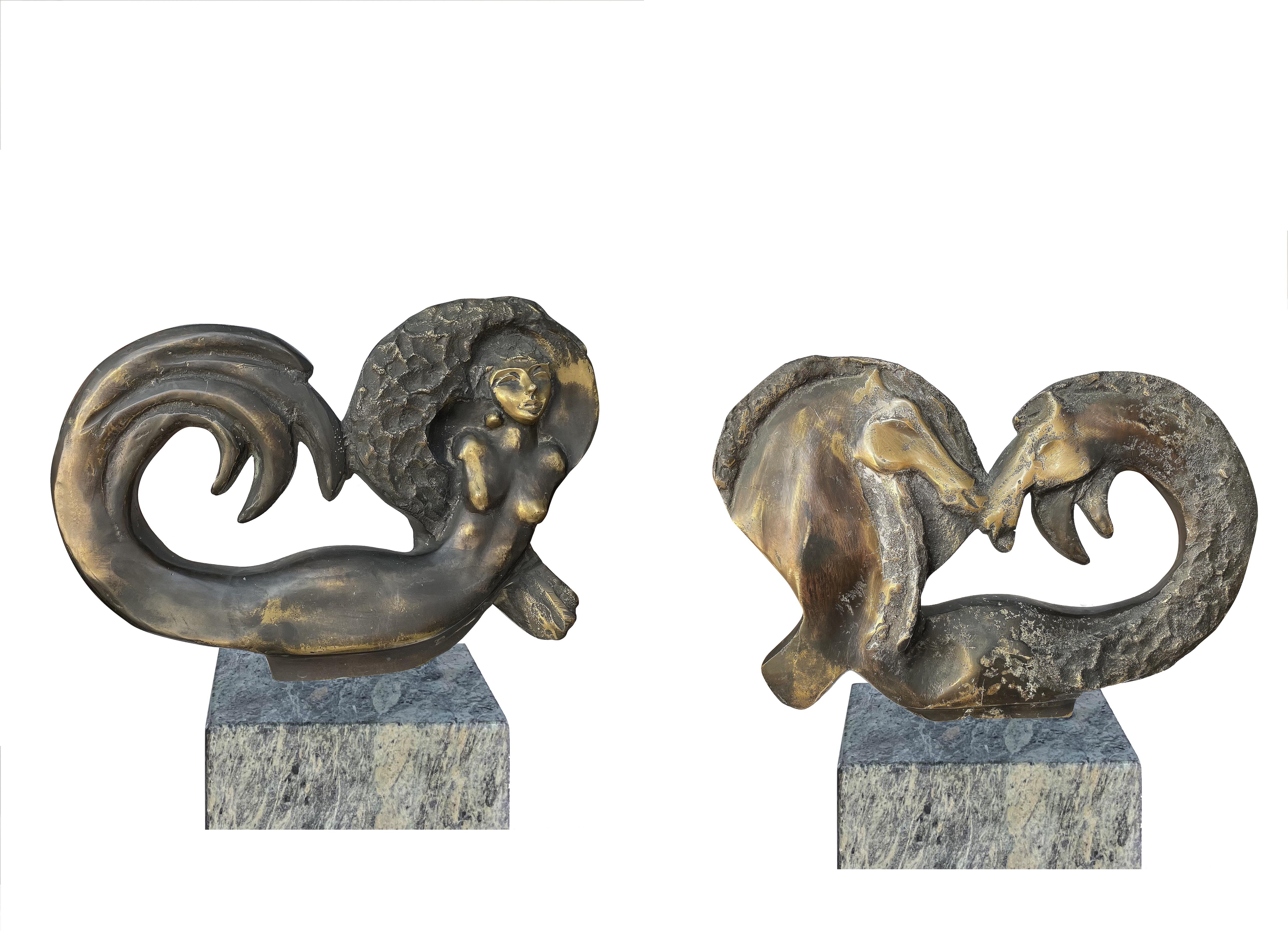
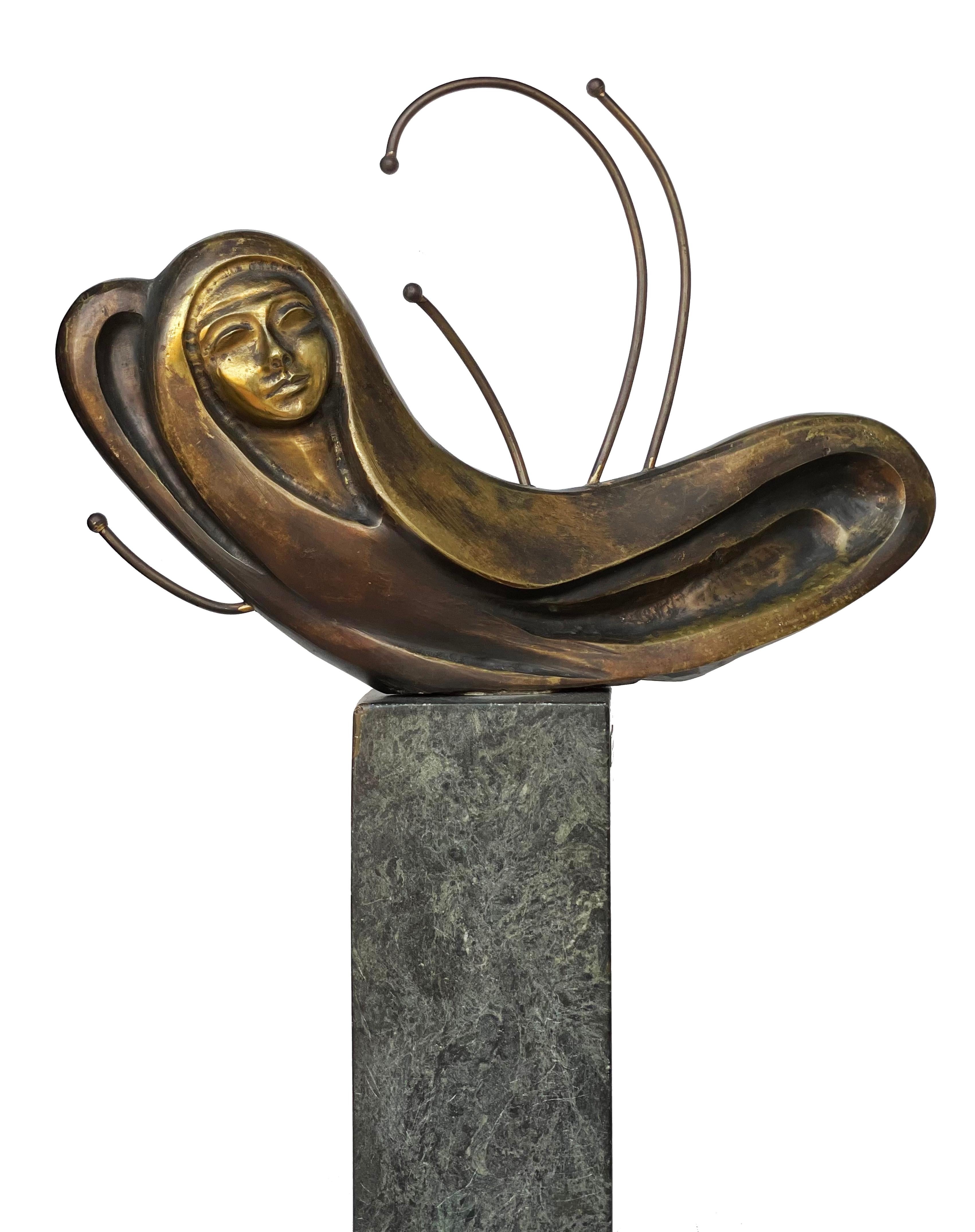
![New York[White], Bronze](https://a.1stdibscdn.com/a_14382/a_76328021614381833679/GFA1217_image_master.jpg)
![New York[Orange], Bronze](https://a.1stdibscdn.com/a_14382/1614381431139/GFA1218_image_2_master.jpg)

